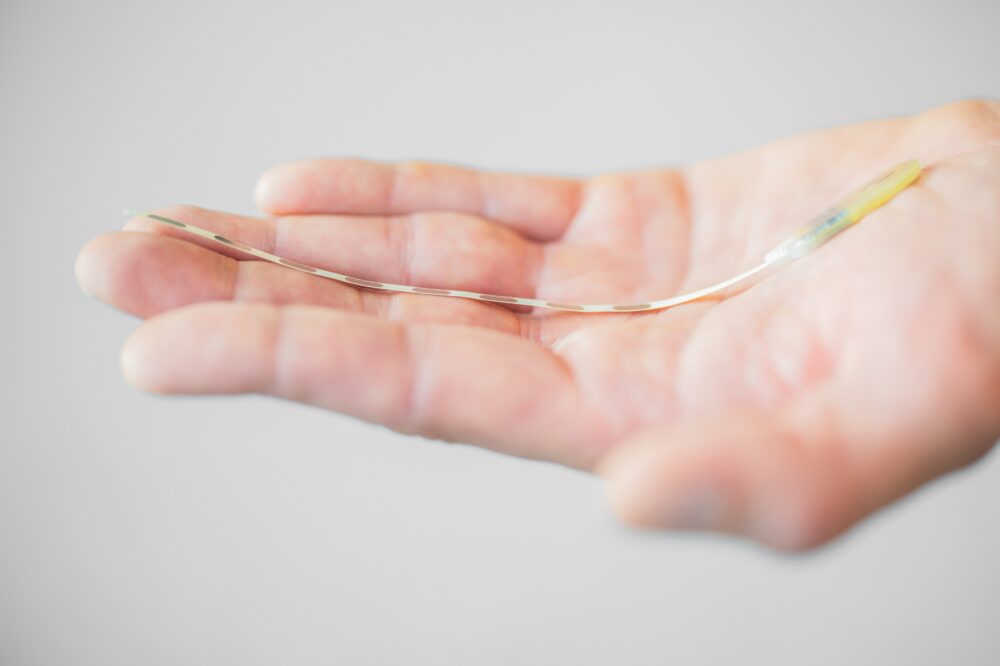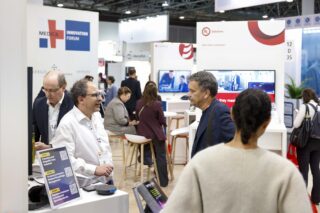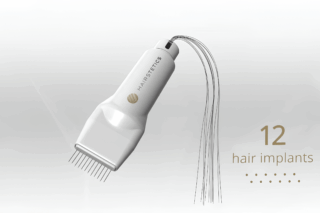Medical device company Salvia BioElectronics has a groundbreaking implant that could offer hope for refractory migraine sufferers.
Migraines are a particular, severe headache that can cause throbbing pain and a pulsing (or even pounding) sensation—usually on one side of the head only. Other possible symptoms include nausea, vomiting, extreme sensitivity to light and sound, chills, fatigue, and frequent urination.
Migraine attacks can last for hours or even days. Although the Cleveland Clinic says that migraine affects an estimated 12% of the American population, Hans Carpay, a migraine expert and neurologist at The Migraine Clinic and author of the book Migraine is Not a Headache, believes that between 1% and 2% of the population suffers from the condition, with most of them being young women. One thing both parties agree on, though, is that migraine is not just a strong headache.
The disorder is commonly treated with combinations of very different types of drugs, but some patients keep suffering from the problem even after medication and therapies. The so-called refractory migraine has complex and still unknown mechanisms that impair the efficacy of preventive treatments.
“Migraines are incredibly complex, and there is no one-size-fits-all treatment. Some patients do not respond well to standard medications because their specific migraine triggers or underlying causes just are not being addressed. For example, the way their brain processes pain signals might differ, or they might have other conditions, like anxiety, sleep disorders, or hormonal imbalances, that make treatment less effective. Occasionally, it is also about how their body metabolizes certain drugs. In many cases, it is not that the medications are ‘wrong’; they just aren’t the full picture,” Dr. Raj Dasgupta, Chief Medical Advisor for Sleepopolis, told MedicalExpo e-Magazine.
A Possible New Therapy: Ultra-thin Migraine Implant
Based in Holland, medical device company Salvia BioElectronics has as its mission to “help people with migraine reclaim control over their lives.” The company has been developing an ultra-thin migraine implant at the High Tech Campus Eindhoven, Netherlands, since 2017. The implant is designed to reduce the frequency and intensity of migraine attacks by sending gentle electrical pulses to the nerves associated with the condition. This technology is known as neuromodulation and has been successfully used for decades in the treatment of other neurological disorders, such as Parkinson’s disease and epilepsy.
“During a migraine, the brain becomes hypersensitive; there is a kind of electrical storm happening, especially along the trigeminal nerve pathways and areas in the brainstem that deal with pain processing. Neuromodulation for migraine is a treatment approach that aims to calm that storm by using electrical or magnetic stimulation to alter the activity of the nervous system, specifically nerves involved in migraine pain. It is like helping the brain rebalance itself when it has gone off course. And the exciting part is that these processes can often happen without the side effects that medications sometimes bring,” Dr. Dasgupta explains.
In practical terms, Salvia BioElectronics’ therapy consists of two paper-thin implants: one placed just under the skin of the forehead and one just under the skin of the back of the head. An external, wearable device accompanies the implants, activating the therapy tailored to each patient’s needs at the touch of a button. Comfort and user-friendliness are key issues.
“The implant has to be user-friendly. If it is too invasive or awkward to use, patients won’t stick with it, no matter how well it works,” Dr. Dasgupta believes.
Last February, a Dutch patient received the implants for the very first time in the country, in a procedure performed at the Erasmus Medical Center in Rotterdam. The ongoing multi-center, double-blind, sham-controlled study RECLAIM is taking place at this hospital and at the also Dutch Antonius Hospital (in both Utrecht and Nieuwegein), which happens to be one of the largest implantation centers for neurostimulators in the Netherlands, as well as at multiple clinical sites in Belgium and Australia.
Salvia BioElectronics is also considering potential opportunities the device creates for the treatment of cluster headaches and other neurological disorders.
Breakthrough Device Designation and Funding
The firm received in 2020 the Breakthrough Device Designation from the United States Food and Drug Administration (FDA), which facilitates expedited market access for devices that treat life-threatening or irreversibly debilitating conditions. In May 2024, Salvia BioElectronics was selected by MedTech Innovator (the world’s largest accelerator of medical technology companies) for its 2024 Accelerator Cohort. After a competitive selection process with a 5% acceptance rate, 65 companies from 1,300 applicants were chosen to participate in MedTech Innovator’s flagship four-month Accelerator program.
The 2024 cohort of medical device, diagnostic, and digital health companies will now have unparalleled access and visibility to the world’s leading ecosystem of seasoned experts, including strategic manufacturers, investors, healthcare providers, payers, patients, and other industry stakeholders.
Also in May, Salvia BioElectronics announced the successful completion of a US$ 60 million Series B financing round. The round was led by Innovation Industries, a European deep-tech venture capital firm, with participation from other investors as well. The funds will enable Salvia to complete the clinical development and prepare for the commercial launch of MySalvia Therapy.










